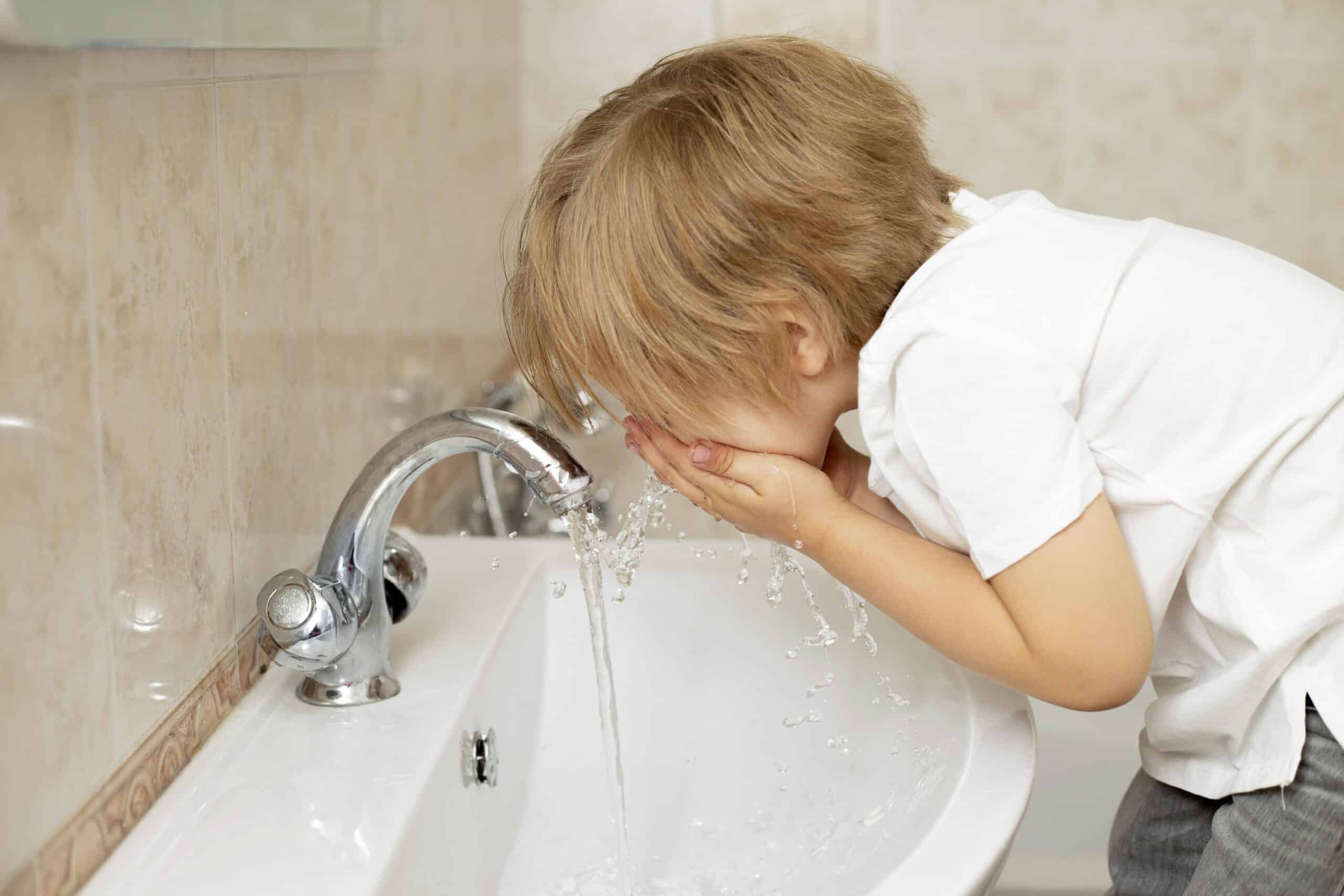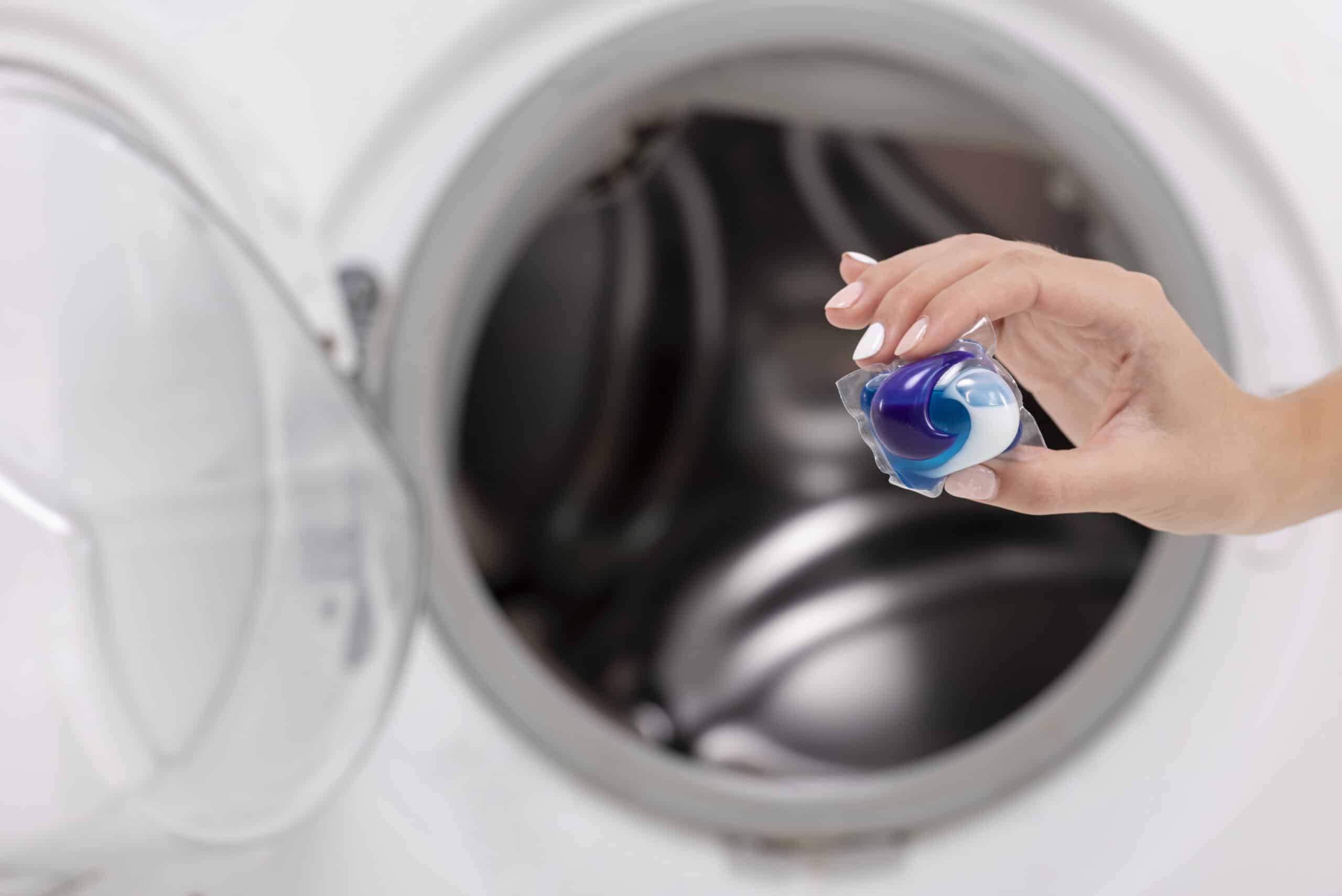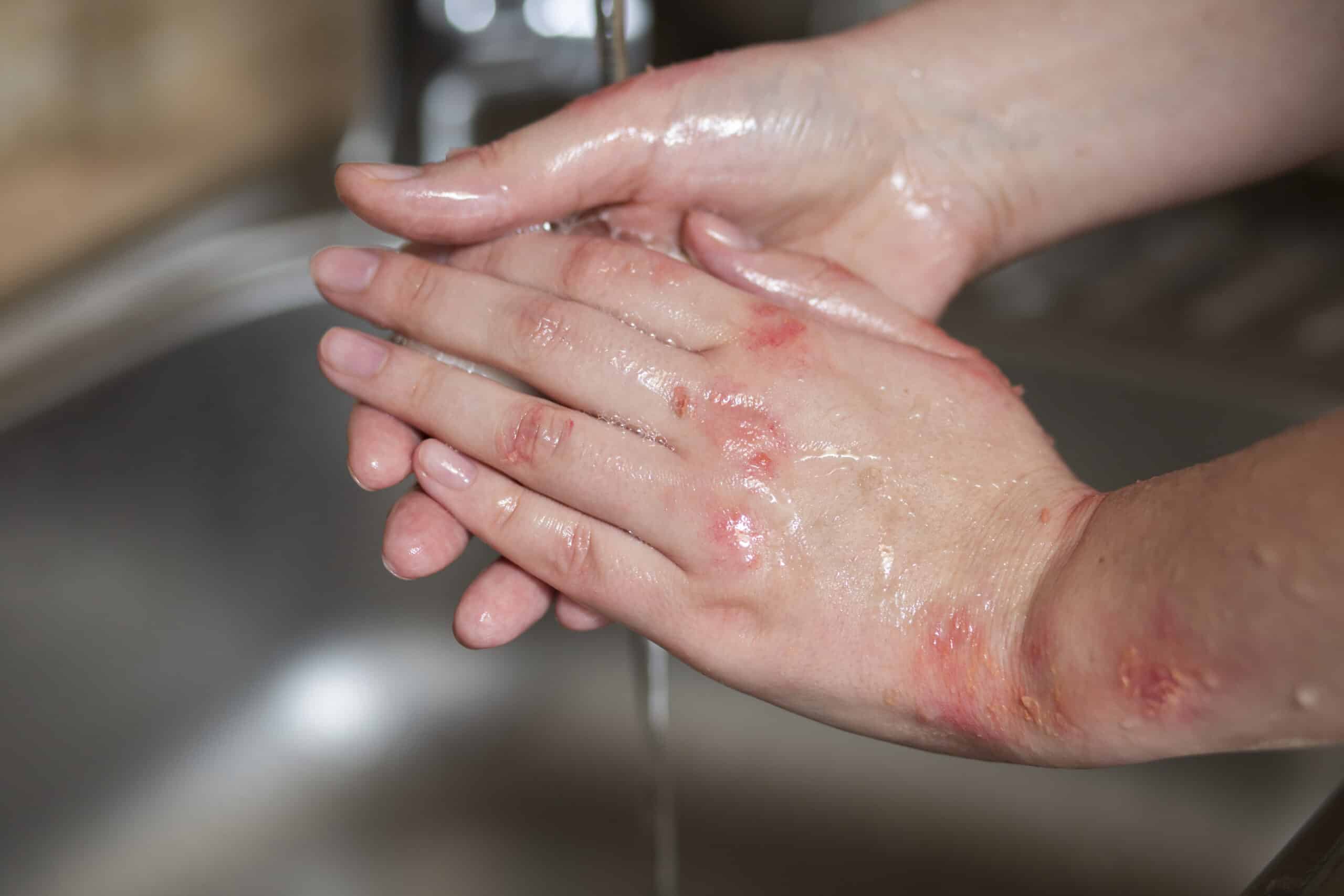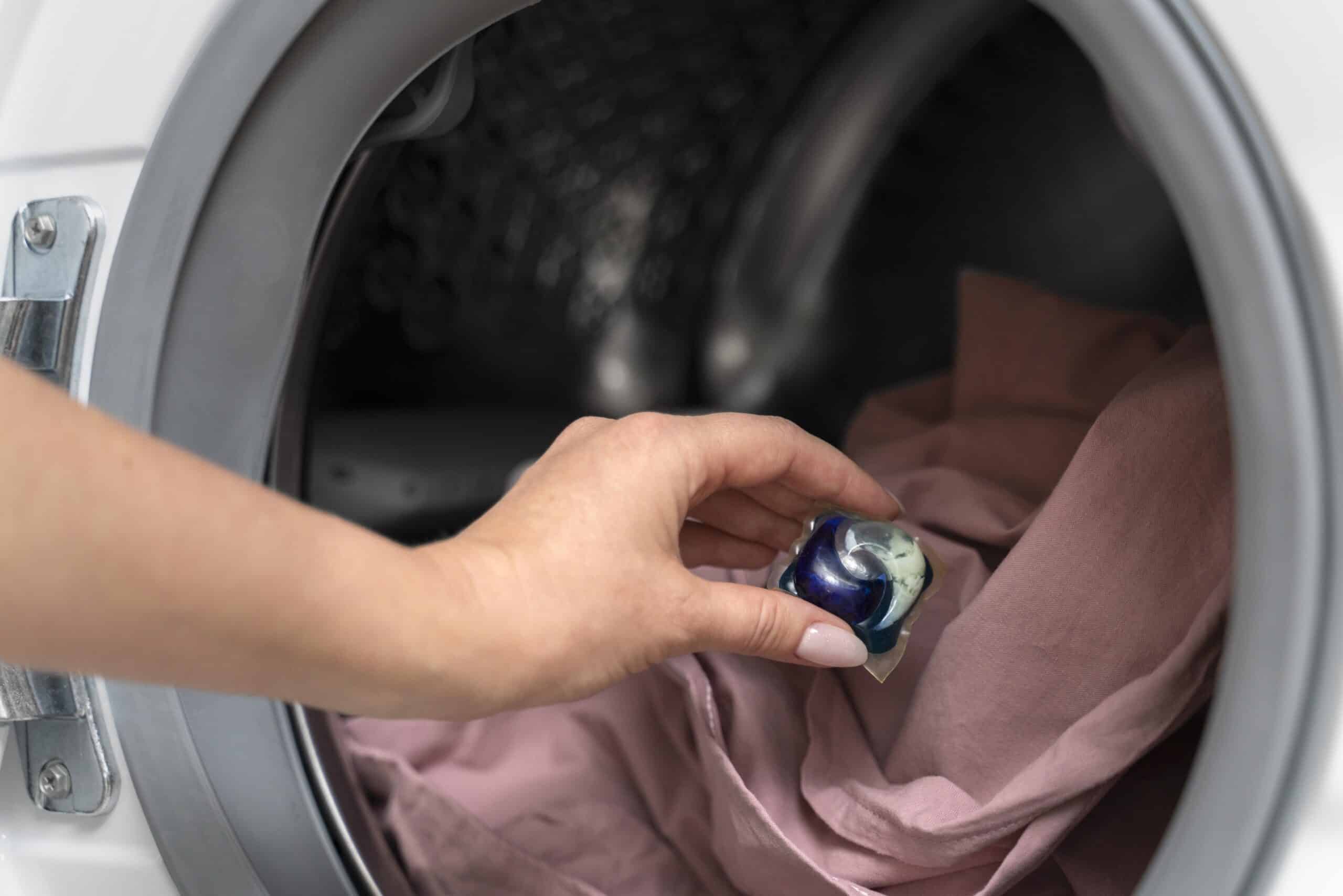Urgent Warning Issued As Common Household Product Leaves Little Girl ‘Blinded In One Eye’
Last updated on
The small, colorful packets we use for laundry offer convenience, but they hide an urgent and acute danger to children. A reported incident where a young child suffered permanent vision loss after exposure to a single laundry detergent pod (LLDP) confirms a devastating reality: these products cause severe, caustic injuries that are far worse than those from traditional detergents.
A Child’s Life Forever Changed
View this post on Instagram
This terrible story of a young child losing her sight is the reason these warnings are so urgent. It happened to four-year-old Luca de Groot in Perth, Australia, showing how a quick, ordinary moment can turn into a nightmare.
Luca’s mom, Jodi Lowe, turned her back for a second while doing laundry, handing Luca a pod to hold. Luca bit it, and the pod instantly exploded, spraying the strong liquid right into her eyes. The chemical burned immediately, and Luca instinctively rubbed her eyes, tragically spreading the corrosive soap even more.
Jodi rushed to rinse the eyes, then checked the product packaging, which only said to “seek medical advice.” Because the warning was so vague, Jodi didn’t realize how severe the injury was—until Luca kept screaming in terrible pain. That’s when she called Poison Control, who told her to rush to the emergency room.
The chemical burn was shocking: Luca had to stay in the hospital for days and endured three separate, agonizing eye surgeries. Doctors struggled to flush the eyes because the soap’s harsh chemicals move so quickly and deeply into the tissue. The medical team had to use a complex procedure to try and fix the severe damage to her eye’s surface. Jodi called the experience “pretty traumatic” and heartbreaking, watching her daughter in such intense pain. Luca still has significant vision trouble, though doctors hope it will slowly improve. The family is speaking out because they believe packaging needs far clearer emergency instructions. This devastating incident shows that these pods are not harmless; they are essentially a chemical weapon when handled by a child, leading to lifelong consequences.
The Candy Look and the Explosive Danger
Since they arrived in , laundry pods have posed an unexpected risk. Their bright colors, compact size, and sometimes clear packaging are simply too tempting. Young children, especially toddlers under three, often mistake them for candy, toys, or teething products because of their attractive look.
This physical appeal is a dangerous match for the chemical inside. To pack maximum cleaning power into a small unit, the liquid detergent within the pods is highly concentrated and much stronger than regular liquid detergent. The high concentration is achieved using potent cleaning agents like non-ionic surfactants and solvents. When a child is exposed, this strength translates directly into a higher risk of serious medical emergencies, including greater rates of hospitalization, vomiting, and breathing issues. This isn’t standard poisoning; it’s a concentrated chemical attack.
The core problem is the packaging itself. The thin, water-soluble plastic shell is designed to dissolve instantly in the wash cycle. But this same design flaw means the shell bursts instantly when exposed to the moisture of a child’s saliva, or when squeezed or bitten. When a child bites down, the liquid is not just a trickle; it is a pressurized blast of corrosive material. This rapid, overwhelming delivery of chemical means the eyes and throat are hit with maximum force and concentration instantly, leaving no time for a natural defense like blinking or coughing to be effective. This leads to an explosive discharge of the strong chemical directly into the child’s eyes or down their throat, causing an immediate, severe burn.
Why the Chemical Burns Are So Dangerous
The serious injuries caused by these pods come down to their extremely high alkalinity—meaning they are highly caustic, similar to a concentrated drain cleaner. When that strong liquid touches a child’s delicate throat or eye tissue, it causes a deep, severe chemical burn.
When swallowed, this highly corrosive liquid quickly starts dissolving the tissue (a medical process called liquefactive necrosis). This is extremely dangerous because it allows the chemical to penetrate deeply into tissues like the throat and esophagus, potentially leading to serious, delayed problems like blockages, severe swelling, and rupture. The potential for serious, delayed problems is what makes these injuries so frightening. Because the caustic liquid destroys tissue through liquefactive necrosis, it can lead to scarring and narrowing of the throat (called strictures). This means a child may face difficulty swallowing and require multiple medical procedures or surgery years later. This concentrated assault can also impact other organs, leading to systemic toxicity, meaning the whole body is affected. Severe respiratory distress from swelling in the throat is a real risk, sometimes requiring a breathing tube (intubation) to keep the airway open.
Beyond the digestive tract, the concentrated formula is a direct threat to the skin and eyes. Even simple skin contact can result in severe chemical irritation, blisters, and partial thickness burns. But the eyes are the most vulnerable. Exposure often results in severe chemical burns to the cornea, the clear front surface of the eye. This can lead to painful damage, delayed healing for over two weeks, and ultimately, permanent blindness because of the high corrosive potential on the delicate eye surface.
The Shocking Frequency of the Crisis
The sheer scale of the injuries following the pods’ introduction was so great that the Centers for Disease Control and Prevention () classified them as an emerging health risk back in . Even with years of safety warnings, the risk is still shockingly high.
The facts show how much worse these pods are than traditional laundry soap:
- Frequent Exposure: poison control centers still receive a call about a laundry pod exposure every minutes.
- Hospitalization: On average, one young child is hospitalized every hours due to contact with these packets. To put the severity in perspective, data shows that exposures to pods resulted in children requiring hospital management () at a much higher rate than those exposed to regular detergent (). This difference isn’t just about a quick doctor’s visit—it means the child’s injury was serious enough to require the resources of an emergency department, and potentially, an overnight stay.
- Severity: When compared to traditional detergent exposures, children exposed to pods were far more likely to require hospital management ( vs ) and experience serious symptoms ( vs ).
- Infant Risk: Infants under one year old face a four-times higher risk of severe outcomes than older children, due to their natural tendency to put things in their mouths. Furthermore, the fact that an infant’s risk of severe outcome is four times higher highlights how the smallest children are uniquely defenseless against the pod’s bursting design, often causing massive swelling before parents can even intervene.
The frequent need for advanced medical care—including hospital stays and specialized surgeries for eye or throat damage—also places a massive financial burden on the healthcare system, costing millions of dollars that could be prevented.
The Critical 15 Minutes: What to Do Immediately
If a child gets laundry pod contents in their eyes, it is an ophthalmologic emergency. Since the chemical burns tissues rapidly, the time it takes to flush the eye is the single most important factor determining whether a child keeps their sight.
Parents and caregivers must act immediately, following these steps:

- Flush Non-Stop: Immediately flush the exposed eye(s) using clean, lukewarm running water for a minimum of to minutes continuously. This need for speed is crucial because the alkaline chemicals don’t just stay on the surface; they penetrate eye tissues rapidly.
- Hold Lids Open: Gently hold the child’s eyelids open during the entire process to ensure the water reaches all parts of the eye and fully clears the chemical. Every minute of delay allows the caustic substance to burn deeper into the corneal stroma, the main body of the eye.
- Call for Help: After the minutes of flushing are complete, immediately call Poison Help ( in the ) and transport the child to the nearest Emergency Department or eye specialist. While the steps are simple, performing to minutes of continuous flushing, which can feel like forever, is the best and only way a parent can drastically improve the child’s ultimate visual outcome before professional help arrives.
Once at the hospital, the child may need continuous flushing for another minutes or more, often requiring local pain relief or even sedation due to the extreme discomfort. For the most severe eye injuries, doctors may need to perform complex surgeries, reflecting the intense and penetrating damage caused by the concentrated pods.
Moving Beyond Dangerous Detergent Packets
While manufacturers have implemented some helpful fixes—like opaque containers and bitter coatings—which have helped slow the crisis, these improvements address the packaging, not the core chemical threat. The unsettling truth is that these changes only reduce the chances of an accident; they do not change the extreme danger inside the packet. The product remains fundamentally caustic, meaning the primary line of defense is always the parent, and if that defense fails for a single second, the consequences can be catastrophic, as seen in Luca’s story. This burden is unfairly placed on caregivers who must maintain flawless security around a product designed to dissolve instantly.
For families seeking absolute peace of mind, the most reliable long-term protection lies not in hoping for a tougher plastic shell, but in choosing inherently safer laundry methods. Traditional liquid detergents are less concentrated and less toxic upon exposure, offering a substantially reduced risk profile. Powder detergents present an even lower risk, as they cannot create the explosive burst hazard. Embracing these time-tested, lower-risk alternatives is the strongest action a caregiver can take to eliminate the threat of permanent chemical injury, ensuring the home is safe by design.
Some of the links I post on this site are affiliate links. If you go through them to make a purchase, I will earn a small commission (at no additional cost to you). However, note that I’m recommending these products because of their quality and that I have good experience using them, not because of the commission to be made.





































 JOIN OVER
JOIN OVER
Comments